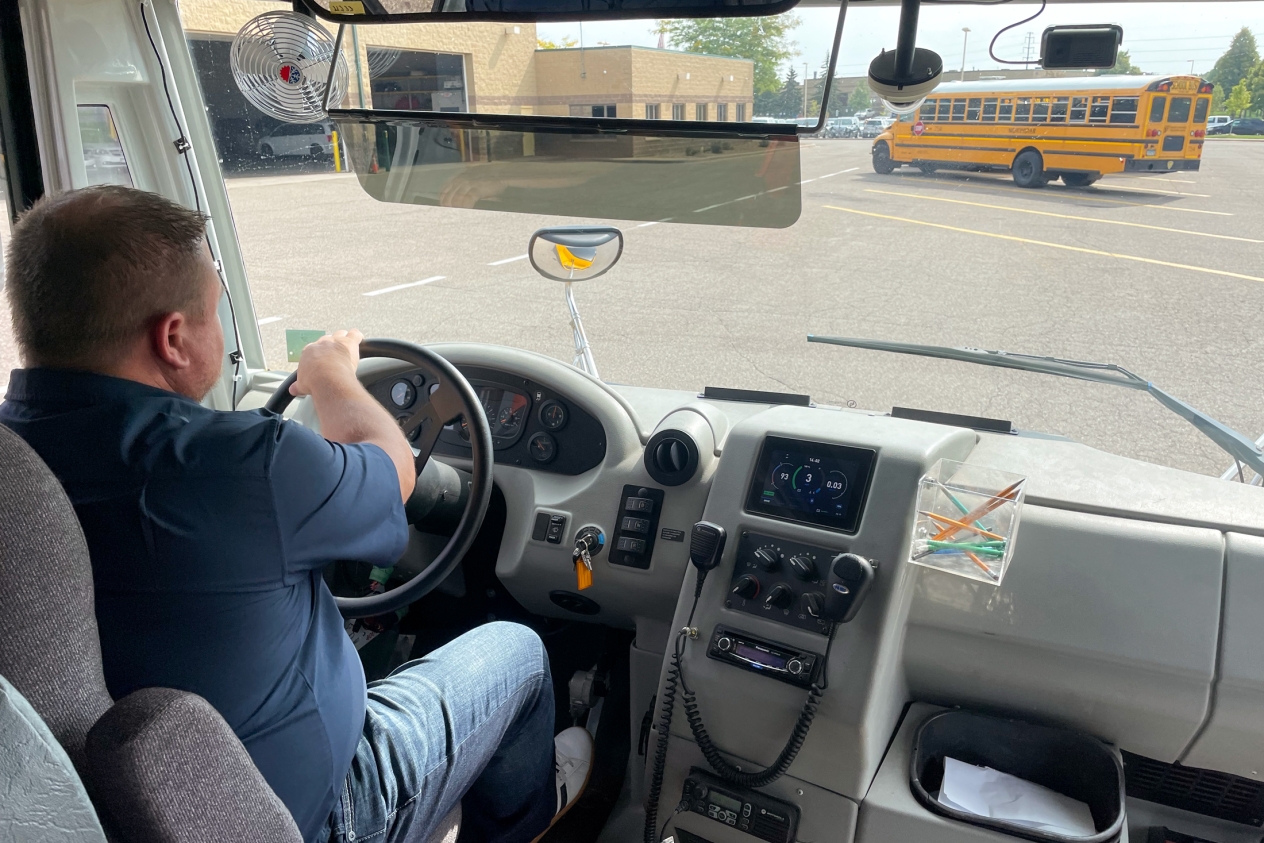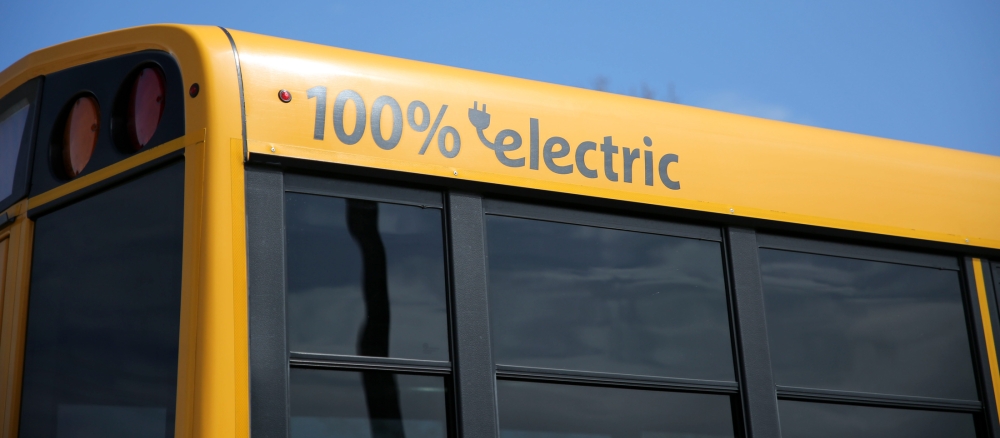Three Minnesota school districts will add electric buses to their bus fleets with more than $5.5 million from the MPCA, one of 70 recipients nationally to receive funding from the U.S. Environmental Protection Agency’s (EPA) Clean Heavy-Duty Vehicles Grant Program. The EPA announced the tentative grant recipients Dec. 11, 2024.
Through this grant and portions of the Volkswagen Settlement, this funding will provide 19 electric buses to school districts in Osseo, Bloomington, and White Bear Lake. The districts were selected based on their designation as disadvantaged communities by the EPA.
Minnesota will receive more than $12.7 million for zero-emission heavy-duty vehicles to help curb climate change, reduce air pollution, and advance environmental justice in the state.
Cost remains one of the biggest barriers to adopting electric school buses. On average, a single electric bus costs between $350,000 and $400,000, not including charging stations, making it difficult for many school districts to make the switch.
“We want to keep costs in the classroom and not out on the school buses,” said Troy Schreifels, director of transportation, security, and emergency management for Osseo Area Schools.
Districts are eager to lower operational costs while maintaining efficient transportation.
“We also want to reduce our carbon footprint and contribute to our sustainability efforts,” said Tim Wald, assistant superintendent for finance and operations at White Bear Lake School District.
The Osseo, Bloomington, and White Bear Lake school districts have committed to environmental initiatives and are choosing to be early adopters of electric school buses. For White Bear Lake, this marks the district's first step into electric buses. Wald is optimistic about the potential of electric buses to provide safer, more sustainable transportation.
“It’s an incredible opportunity to add a clean-burning vehicle to our bus fleet,” Wald said. “We’ve been interested in adding electric buses, and we can use this opportunity to learn from them and possibly add more in the future.”
Both Osseo and Bloomington have already introduced some electric buses and hope to continue expanding their fleets. Bloomington had the necessary charging infrastructure in place, making it easier to add more electric buses.
Osseo has shifted from diesel to propane in recent years. Propane buses currently account for about 75% of its fleet and electric buses account for 10%. Schreifels sees this as a natural next step.
“It’s my job to find the most efficient, cost-effective, and carbon-neutral fleet I can,” Schreifels said. “Before these grants became available, having any EVs in our fleet would’ve been out of reach.”
The hope is that electric buses will result in cost savings due to fewer parts, lower maintenance, and reduced fuel costs.
“Being on the front end of this, we hope we can generate more interest in these types of vehicles, and we’re hoping that eventually the costs of these vehicles will come down, and over time we’ll spend less money on maintaining them,” Schreifels said.
The MPCA’s electric school bus pilot project, which ran between September 2022 to February 2023, deployed Volkswagen settlement funds to better understand electric school buses and how they operate in Minnesota. The MPCA funded eight electric school buses across the state and collected data on cost, reliability, mileage, as well as other aspects like comfort and quality of the bus.
The pilot project found that the average fuel savings across all electric buses was about $430 per month, or $51,600 over 10 years.
Beyond fuel and maintenance savings, the pilot project revealed additional benefits of zero-emission buses. The buses offer a cleaner, quieter ride, improving the experience for students and drivers. Idling in winter is no longer a concern since the buses don’t emit pollution that could enter the school’s air system. Participants also found the buses warmed up quickly in cold temperatures and remained reliable on chilly days.

For the community, electric buses mean better air quality and reduced noise pollution in neighborhoods. Because they’re quieter than diesel buses, Schreifels noted that the electric buses will play music when traveling less than 15 mph in neighborhoods to alert passersby.
“I call it the local ice cream truck,” he said.
The awarded school districts are optimistic about the shift toward electric. While they are still early adopters, they hope having their electric buses visible in the community will draw attention to the growing prevalence of electric vehicles and their benefits for the environment and community health.
For these districts, they’re forming a cleaner and healthier community for the students they serve one bus ride to school at a time.

